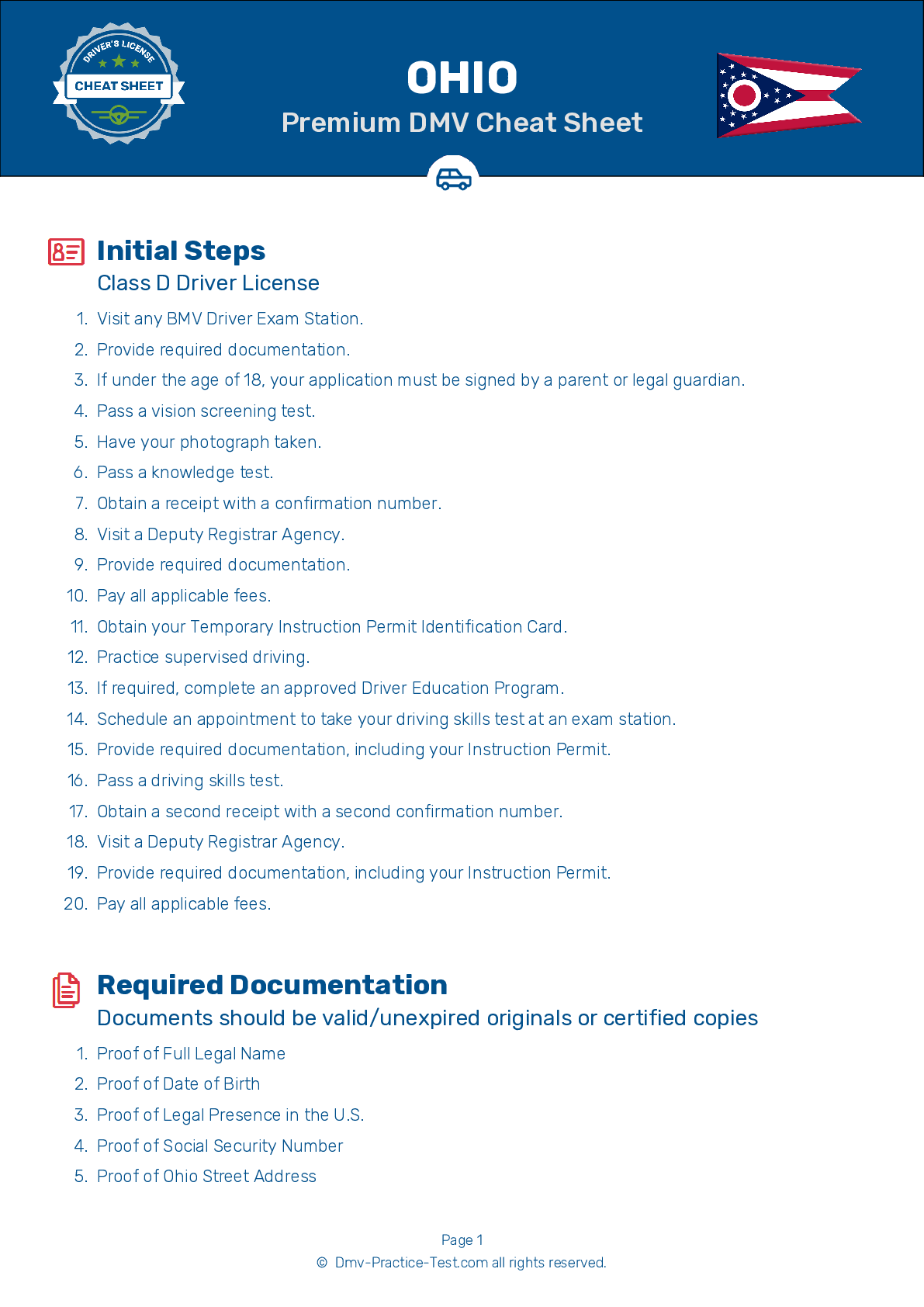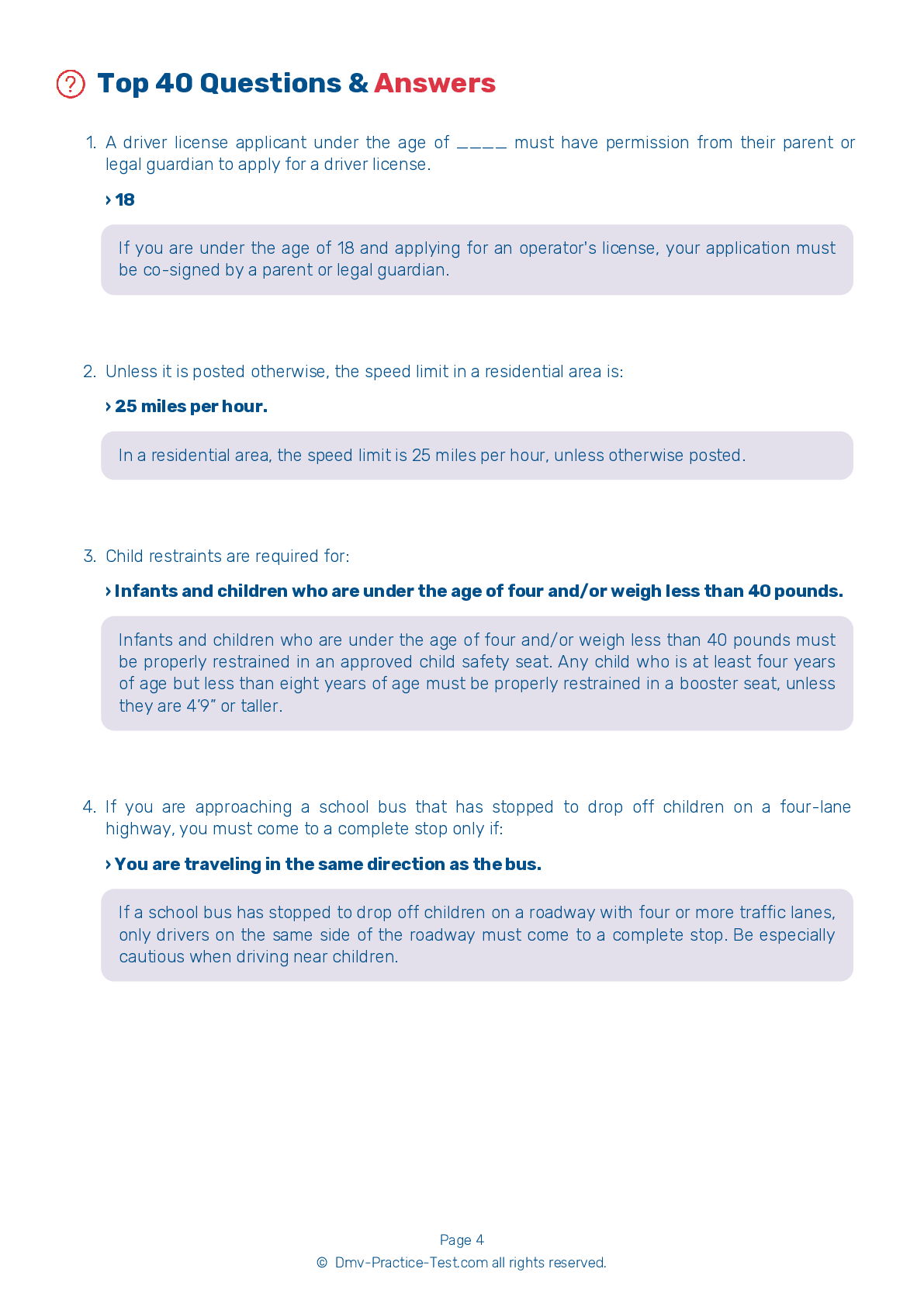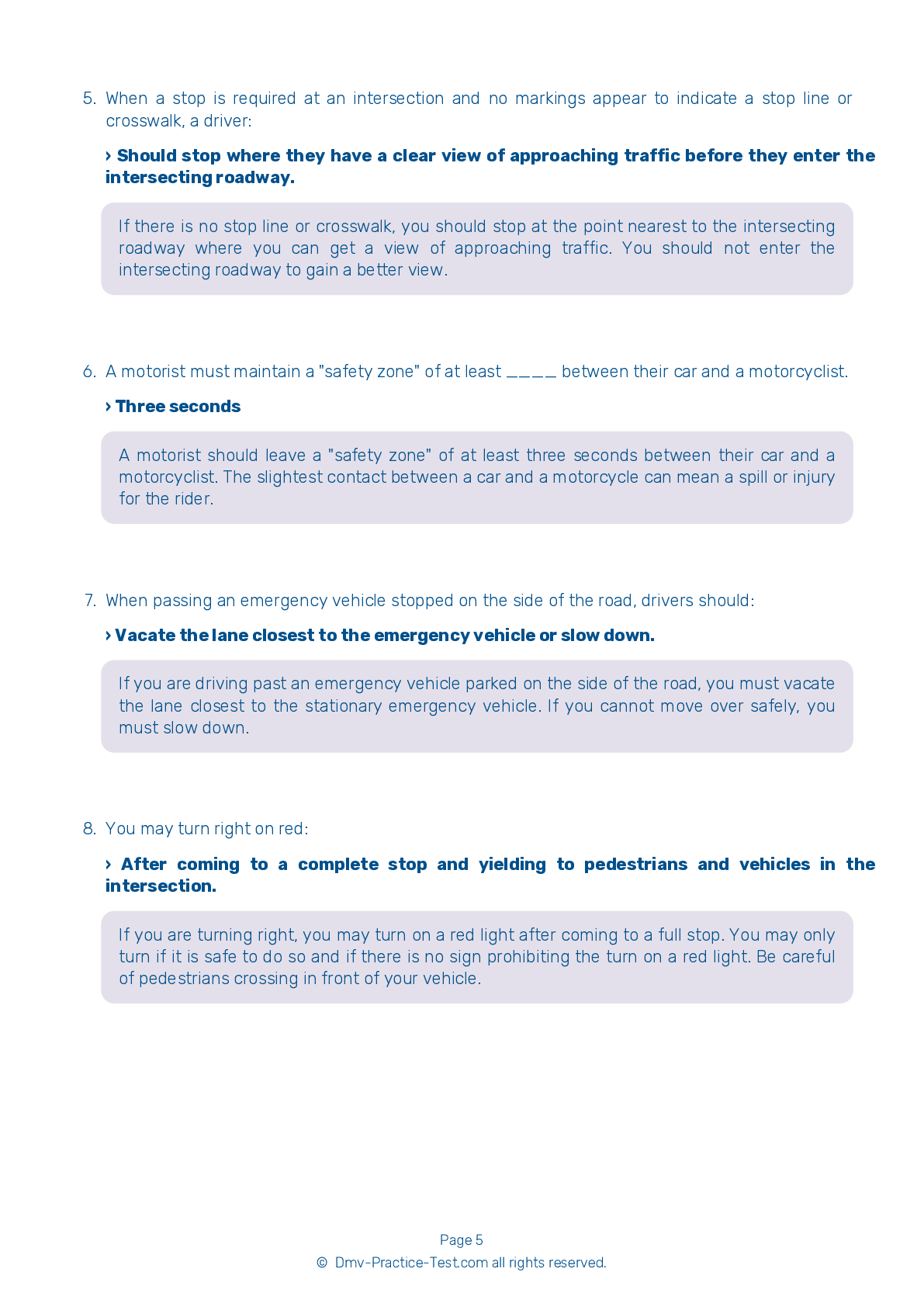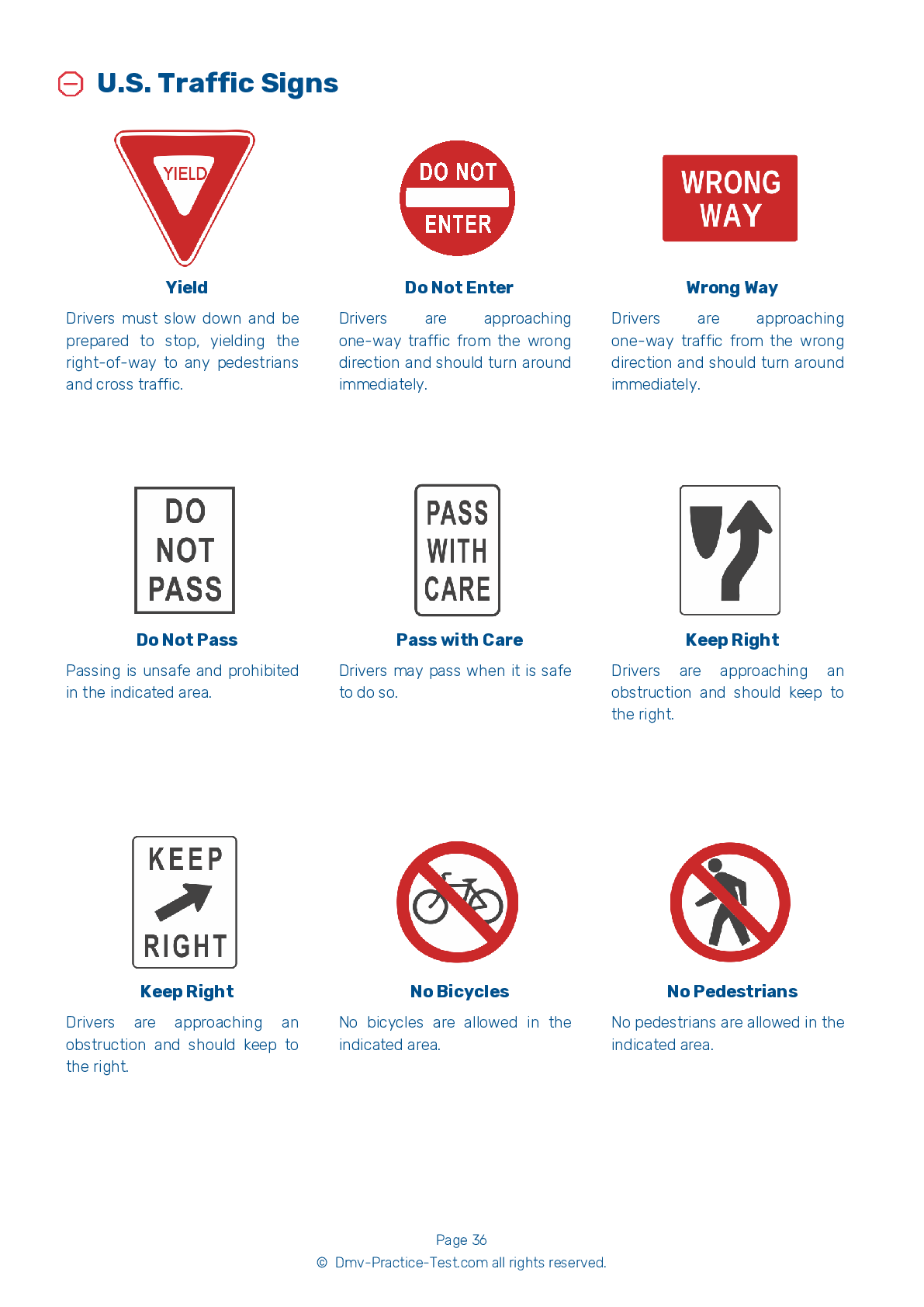FREE Ohio DMV Practice Test #1 Page 4 of 5
The practise exams for Ohio's DMV have been revised for January 2025. It comprises questions based on the most important traffic signals and laws for 2025 from the Ohio Driver Handbook. To study for the DMV driving permit test and driver's licence exam, use actual questions that are very similar (often identical!) to the DMV driving permit test and driver's licence exam.
Each question on the practise exam has a tip and explanation to help you recall the ideas. Questions about traffic rules, traffic signs, and driving statutes, as well as knowledge from the Driver Handbook, will be included in the written portion of the official Ohio DMV test.
You must properly answer 35 of the 40 questions to receive a passing mark. To help you prepare for your instruction permit or driver's licence, take this practise test from the Ohio Department of Motor Vehicles.
The DMV exam is offered in a variety of languages.
Using any form of testing help will result in an automatic fail, and the DMV may take further action against your driver's licence, so avoid it.
25 . A broken yellow line alongside a solid yellow line means:
A broken yellow line alongside a solid yellow line means that passing is allowed from the lane on the side next to the broken line.
26 . What should you do when you see this sign?
.png)
This sign indicates that there is a railroad crossing on the road ahead. You should always slow down when approaching a railroad crossing. Trains cannot yield to cars, so you must let them pass before crossing the tracks.
27 . A single broken white line down the center of a two-lane road indicates:
White lines are used to separate traffic moving in the same direction. Dashed lines indicate that drivers directly next to the line are permitted to pass when it is safe to do so.
28 . You may not park within ____ of a railroad crossing.
Drivers should not park within 50 feet of a railroad crossing. Drivers should only park where it is legal to do so and where other drivers can clearly see their stopped vehicle.
29 . When may you pass on the right shoulder of the road?
If you pass on the right, do so only when conditions permit you to do so safely. Under no circumstances are you allowed to drive off the pavement or onto the shoulder.
30 . The driver's left arm and hand are extended downward. This hand signal means that the driver plans to:

If a driver's left arm and hand are extended downward, they are indicating that they intend to stop. Adjust your driving accordingly if following a driver who is using this hand signal.
31 . Highway markings:
Highway markings provide information for drivers. Markings help drivers correctly position their vehicles on roadways, inform drivers of safe passing zones, and warn drivers about upcoming conditions.
32 . What are the colors of warning signs indicating upcoming hazards?
Warning signs that indicate approaching hazards are usually yellow with black lettering or symbols. Warning signs in work zones are orange with black lettering or symbols.
See the exact questions that will be on the 2025 Ohio DMV exam.
99.2% of people who use the cheat sheet pass the FIRST TIME
LT gives us an insight on how the cheat sheet provided her with all the study questions she needed before taking her test.
Joe initially studied with the handbook and failed his test, he eventually found us online, studied and pass his test the first time around.



